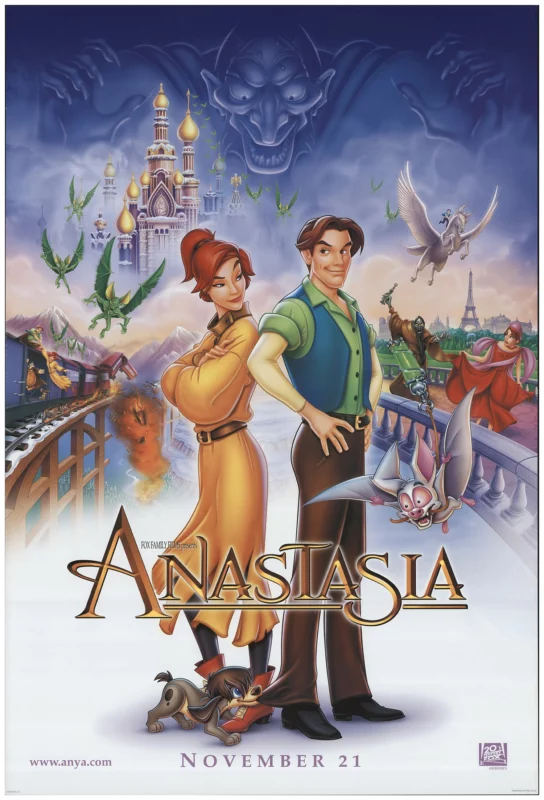On Facebook there is a trend where people steal photographs and use generative AI to kinda jumble shit around so they don’t have to credit the photographer. Anastasia is the animated equivalent of that. I assume that in 1995 Fox rammed the following note up Don Bluth’s ass: “you are four flops deep. Stop casting Don DeLuise, stop doing weird cute shit, and make a safe Disney-style movie we can sell”. He did as he was told, and Anastasia became a rare box office success for the Bluth/Oldman partnership.
It’s a strange film. It always felt a little “off”—as though its creators understood how Disney films work, but not really why they work, and like an AI scrambled photograph, the finer details are a little wrong.
Rasputin is supposed to be a Disney-style villain…but he has no motivation. They forgot he needed one. He chases Anya all over continental Europe like a borscht and Satan-fueled Terminator for no reason at all. Scar and Jafar do evil deeds because they want power. Rasputin does evil deeds because he’s a bad guy in a movie.
The decision to set a fairytale in a very specific time and place (Russia, during the Bolshevik revolution) opens up a Shai-Hulud-sized can of worms that the film is unprepared for. Why are the peasants angry? What caused the Russian Revolution? We’re now balls-deep in awkward sociopolitical history and the movie’s take (“Rasputin is using SATANIC POWERS to overthrow Russia’s good and kind monarchy!”) seemed glib and borderline offensive even when I was a child.
I don’t expect Anastasia (1997) to guide the viewer through the intricacies of the April Crisis or the Kornilov Affair. And obviously “hurr hurr, Belle’s husband will get guillotined in the French revolution!” is brainless Cinema Sins-tier slop-criticism motivated by a preening, hubristic need to prove yourself smarter than a children’s film. But the movie choses terrible soil for a “and they lived happily ever after” fairytale. You know where fairytales ideally happen? In the land of far, far away.
It’s not all bad. It’s not even mostly bad. It’s more a victim of uncanny valley: its missteps seem really noticeable mostly because they’re not large.
It has three good songs. Which is better than “one good song” (his last film), and “no good songs” (the film before that). And yes, it does clear the almighty bar of being better than Thumbadoodle and the Penguin in Central Park, so score one for the good guys there.
There’s some fun nasty stuff that reminds us of the “adult” ’80s Don Bluth. Like when Rasputin’s head pops down into his trunk and Bartok has to speak into his gruesome exposed chest cavity. Great stuff. Movie needed more of it.
The animation often looks surprisingly ragged and cheap for a film budgeted at 1.8 Aladdins. Anya and Dmitri both have typical “Don Bluth hair” where it looks like a wig that doesn’t attach to their scalp and might blow away at any moment. The colors (Don Bluth’s personal kryptonite) remain as drab and lifeless as ever.
My feel for the 90s animation scene was that it was difficult for smaller studios to find talent: as soon as someone good graduated CalArts, Disney sucked them up like a sponge. When a god-tier animator like Andreas Deja hits the scene, is he gonna work for your broke-dick studio which might be gone in a year, or for Disney? The choice is obvious. Money didn’t “buy” animation quality as reliably as you might think: there was a limited supply of artists who could turn around high-quality work, and most were sucking The Mouse’s tit.
The plot involves frauds, doppelgangers, deceptions. Things work out well for the heroine, but Anastasia itself never quite feels like the genuine article.
(Also, Marie’s reward is 10 million roubles, but I misheard this as a child as 10 million rubies. I could take Morshu out of business with that.)
No Comments »
Comments are moderated and may take up to 24 hours to appear.
No comments yet.

